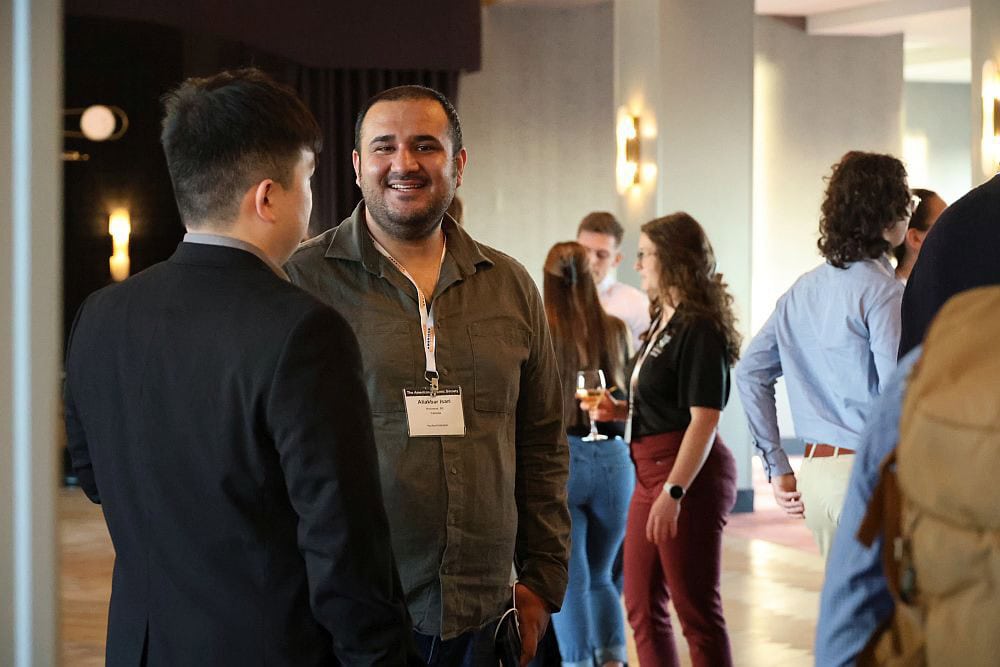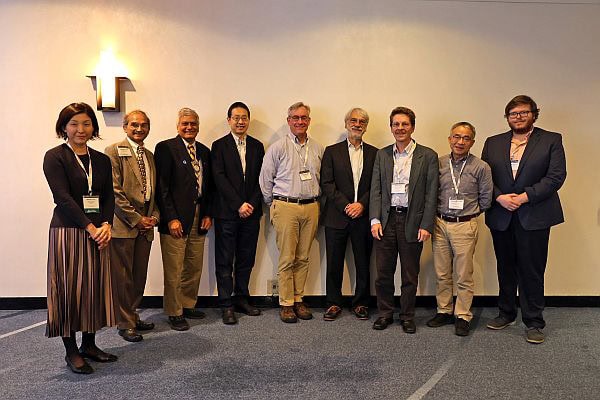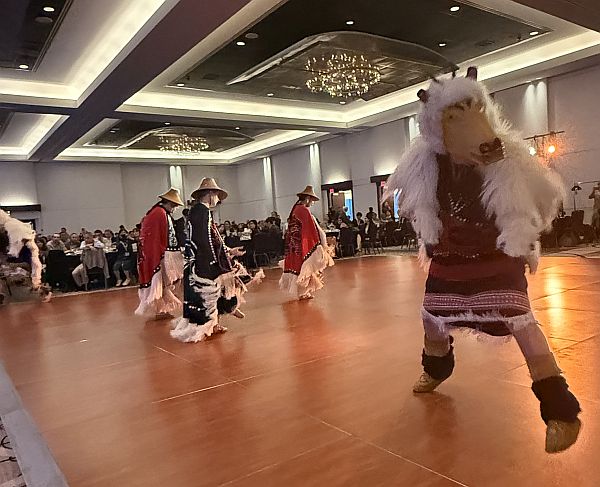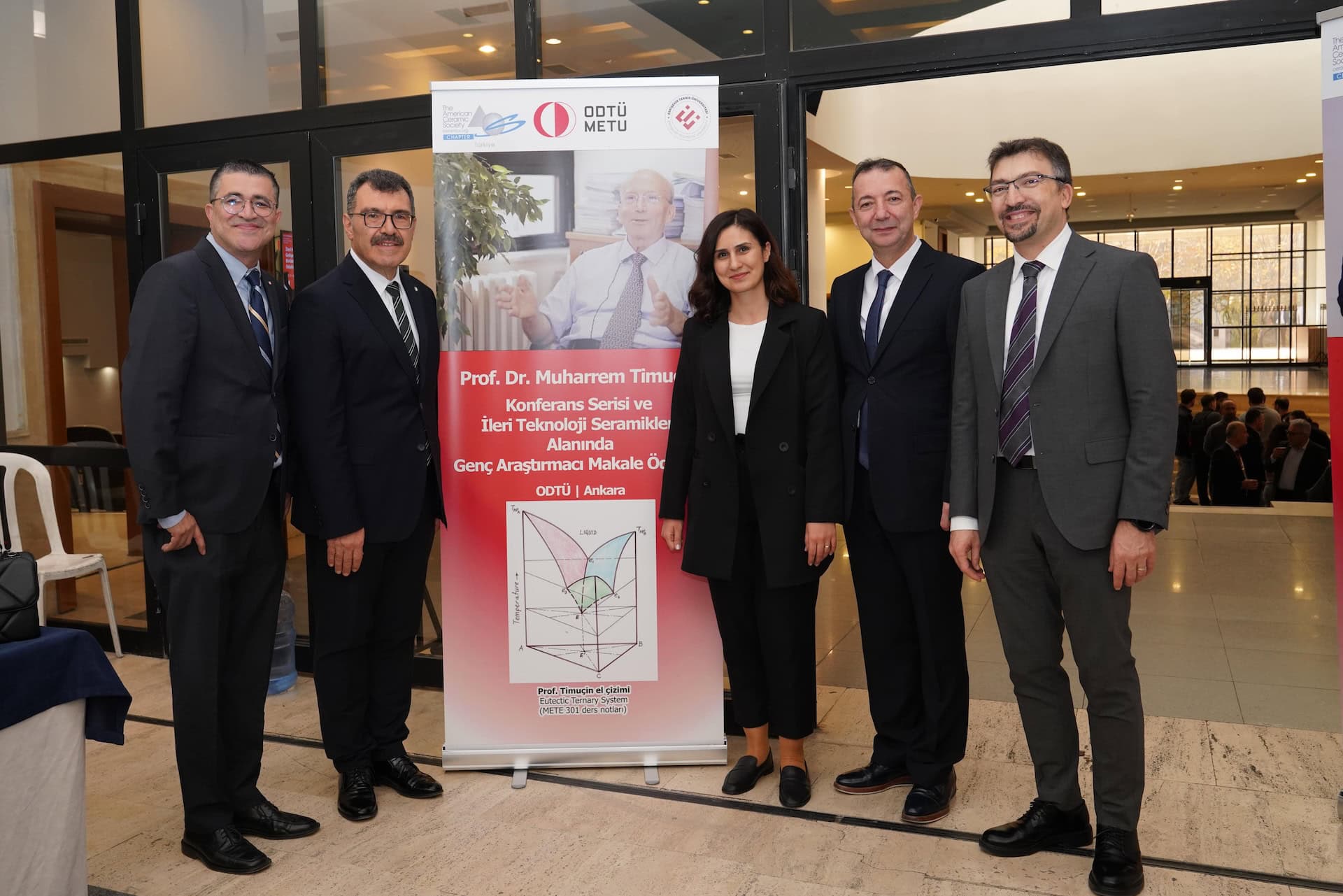
[Image above] Attendees at the Glass & Optical Materials Division student mixer on Monday night. Credit: ACerS
In a year marked by challenges to international travel, hundreds of people successfully came together in the heart of Vancouver, Canada, from May 4–9 to share their love for ceramic and glass materials at the 16th Pacific Rim Conference on Ceramic and Glass Technology (PACRIM).
PACRIM is a biennial conference held in collaboration with the ceramic societies of the Pacific Rim countries: The American Ceramic Society, Chinese Ceramic Society, Ceramic Society of Japan, Korean Ceramic Society, and Australian Ceramic Society. As a benefit of the 2025 conference taking place in North America, the annual meeting of ACerS Glass & Optical Materials Division took place alongside the PACRIM programming as well.
The more than 700 attendees at this year’s combined conference came from 33 countries and included 114 students. They enjoyed talks on a wide range of established and emerging ceramic and glass technologies across more than 40 symposia, organized by PACRIM chair Yiquan Wu and co-chair Brian Huey and GOMD co-chairs Madoka Ono and Collin Wilkinson.
“I truly felt that the 16th PACRIM was a beautiful testimony to the wonderful international ceramics community. We gathered at the conference not only as scientists and researchers but also as individuals committed to creating a better world—by fostering stronger friendships, broader collaborations, and a deeper sense of humanity among participants,” Wu says.
Ono also expressed excitement for the turnout and engagement at this year’s meeting, saying that she sees GOMD 2025 as “just the beginning.”
“As these kinds of interactions become more common, I expect glass research will emerge more prominently—even within the broader ceramics field, where glass has long been a part but often overlooked,” Ono says.
Highlights from PACRIM 16/GOMD 2025 are below.
Plenary lectures dive into the structures that underlie our world
The PACRIM programming featured six plenary talks by experts who specialize in understanding the microstructures that make up our beloved ceramic and glass materials. The first four plenaries were presented on Monday, and the last two were presented on Tuesday.
Martin Harmer of Lehigh University presented the first plenary on complexions, or complex 3D structures found within the internal interfaces of ceramics. This concept has gone by many different names over the years, and Harmer advocated that scientists adopt a unified terminology to help streamline research on this phenomenon.

At the end of his lecture, Martin Harmer surprised attendees with shirts featuring a diagram of complexions as well as a list of terms used to describe this concept in the literature. Credit: ACerS
Yuichi Ikuhara of the University of Tokyo presented the second plenary on the behavior of grain boundaries in ceramics, focusing on fracture mechanics as well as diffusion and migration of atoms, among other dynamic phenomena.
Jian Luo of the University of California, San Diego presented the third plenary on using flash sintering to control the microstructure in ceramics. He also briefly mentioned the use of blacklight and plasma sintering, as well as opportunities for controlling the microstructure in high-entropy ceramics.
Haiyan Wang of Purdue University presented the fourth plenary on designing functional ceramics by harnessing complex hybrid metamaterial systems. Her main example described vertically aligned nanocomposites films for use in memristors, batteries, and fuel cells.
Seungbum Hong of Korea Advanced Institute of Science & Technology presented the fifth plenary on using various imaging methods to investigate ion behavior and polarization in piezo and ferroelectric materials. Understanding this behavior can open new pathways in battery design.
Liangbi Su of Shanghai Institute of Ceramics, Chinese Academy of Sciences was the sixth and final plenary speaker. Unfortunately, he was unable to attend the conference, so his colleague gave the talk—which focused on local structure tailoring of rare-earth-doped optical materials—on his behalf.
Besides the plenary lectures, Wu also recognized this year’s recipients of the Samuel Geijsbeek PACRIM Internal Award: Dileep Singh of Argonne National Laboratory and Junichi Tatami of Yokohama National University. This award recognizes individuals who are members of the PACRIM societies for their contributions that have resulted in significant industrial and/or academic impact, international advocacy, and visibility of the ceramic and glass field.
Award talks showcase novelties in glass science
The GOMD programming featured five award talks by experts conducting research on the cutting-edge of glass science.
Daniel Neuville of the Paris Institute of Earth Physics presented the George W. Morey Award lecture on the fundamental relationships between glass compositions and their properties. He demonstrated how advanced spectroscopic techniques can elucidate these critical structure–property relationships, providing valuable insights for both theoretical understanding and practical applications in glass science and technology.
Jayani Kalahe of the University of North Texas presented the Norbert J. Kreidl Award lecture on her doctoral research, which involves understanding structure–property relationships in iron phosphate nuclear waste glasses through computer simulations. More details about her research can be found in the June/July 2025 Bulletin, which publishes online tomorrow.
Timothy Gross of Corning Incorporated presented the Stookey Lecture of Discovery on understanding the mechanisms that prevent catastrophic fracture in damage-resistant glasses. His examples included Corning’s famous Gorilla Glass and recently released Fusion5 windshield.
This year’s recipients of the Darshana and Arun Varshneya Frontiers of Glass Lectures were John Mauro of The Pennsylvania State University and Stephen Elliott of the University of Oxford. Mauro was unable to attend the conference, but he provided a recording of his Frontiers of Glass Technology lecture on LionGlass, a novel glass family that could someday replace soda lime silicate glass in many applications. Elliott presented the Frontiers of Glass Science lecture on so-called “bad” glasses, or ones that readily crystallize. He showed these glasses could find application as good phase change materials, however.
Besides the award lectures, Delbert Day of Missouri University of Science and Technology was also recognized with the L. David Pye Glass Hall of Fame Award. Day was unable to attend the conference, so fellow Missouri S&T professor Richard Brow accepted the award in his stead.

GOMD co-chairs Madoka Ono (far left) and Collin Wilkinson (far right) stand with Arun Varshneya (second from left) and other past recipients of the Frontiers of Glass Lectures. Credit: ACerS
New sessions and networking events help attendees ‘merge and emerge’
For GOMD co-chair Ono, she saw this conference as an opportunity for attendees to “merge” their shared knowledge and personal networks and subsequently “emerge” with a new appreciation and research directions for ceramic and glass science and technology.
To support this goal, the GOMD programming included a special symposium on Emerging Frontiers: Glasses in New Technology. The meeting co-chairs also organized an informal Fun Run (walk around Vancouver) and Student Mixer to help attendees build new networks with their peers.
“It seems that both the audience and presenters are truly enjoying and appreciating this effort,” Ono says.
The ACerS-organized Conference Mentor Program also took place at PACRIM 16/GOMD 2025, and this time 19 mentors and 24 mentees participated.

Attendees at the GOMD student mixer on Monday night. Credit: ACerS
Appreciating the nature and culture of Vancouver
Having a conference in one of the most beautiful cities in the world is a waste if no one has time to explore it. For this reason, the PACRIM/GOMD organizers graciously left Wednesday afternoon open with no scheduled sessions so attendees could enjoy the breathtaking views offered by the Pacific Ocean and North Shore Mountains.

Grouse Mountain is one of the North Shore Mountains near Vancouver. It is known for the challenging Grouse Grind Trail, which several members of the ACerS staff successfully completed on Wednesday afternoon. From left: Mark Mecklenborg (who met up with the hikers at the top of Grouse Mountain), Lisa McDonald, Andrea Ross, Madilyn Paul, and Kameron Haines. Credit: ACerS
Vancouver is also known for its cultural diversity, and during the banquet on Thursday night, members of the Squamish First Nations performed several traditional dances for attendees.

Squamish First Nations dancers performing during the Thursday banquet. Credit: ACerS
View more images from the conference on ACerS Flickr page. Next year, GOMD will take place alongside five other Division meetings at the new ACerS Spring Meeting in Bellevue, Wash., in April 2026. We look forward to seeing you there!
Author
Lisa McDonald
Spotlight Categories
- Meeting Highlights
Divisions
- Glass & Optical Materials


